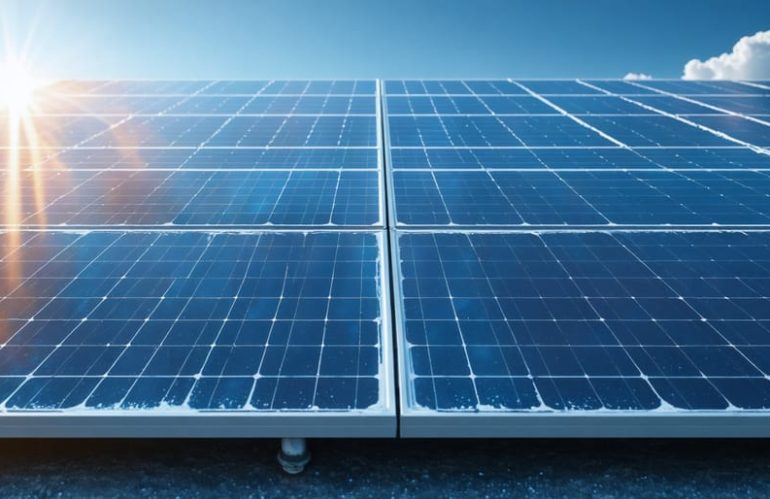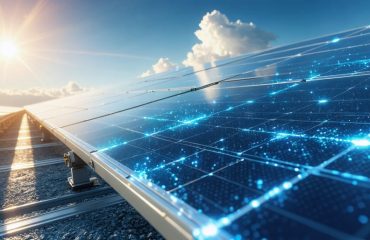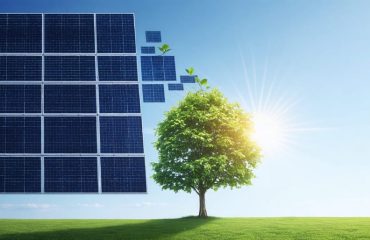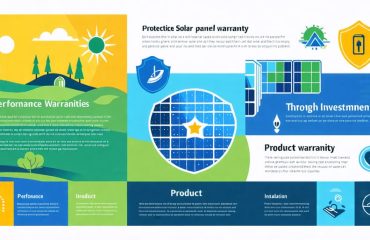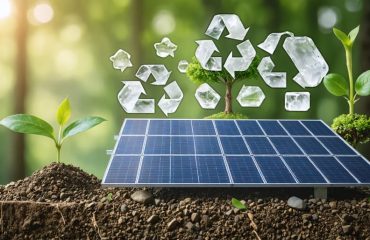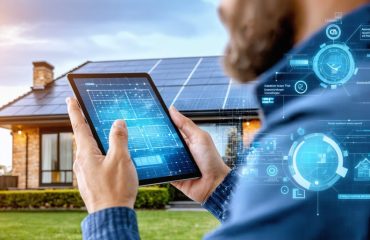Solar panels are one of the most reliable renewable energy investments, but like any technology, they experience gradual performance decline over time. Understanding your solar panel’s degradation curve – the predictable rate at which panels lose efficiency – is crucial for making informed decisions about solar installation and maintaining realistic expectations about long-term energy production. Most quality solar panels degrade at just 0.5% to 0.8% per year, meaning they’ll still produce about 85% of their original output after 25 years. This remarkably slow decline, backed by manufacturer warranties and decades of field data, demonstrates why solar remains a sound investment for homeowners seeking energy independence and reduced utility bills. Whether you’re considering solar installation or monitoring your existing system’s performance, knowing how degradation affects your panels helps maximize your renewable energy investment while ensuring reliable power production for decades to come.
What is Solar Panel Degradation?
Common Causes of Solar Panel Degradation
Solar panels naturally experience wear and tear over time, but understanding the common causes can help you maximize their lifespan. The primary environmental factor affecting panel performance is prolonged exposure to UV rays, which gradually impacts the materials used in solar cells. Temperature fluctuations also play a role, as extreme heat can slightly reduce efficiency, while frequent freezing and thawing cycles may stress the panel materials.
Physical factors like dirt, dust, and debris accumulation can temporarily decrease performance, though this is easily remedied through regular cleaning. In snowy regions, the weight of heavy snow can strain the panels, while areas with frequent hail may experience minor surface wear. Coastal locations might see accelerated wear due to salt spray exposure.
The good news is that modern solar panels are built to withstand most environmental challenges. Manufacturing defects account for only a tiny percentage of degradation issues, and most panels come with warranties protecting against unusual performance drops. Simple maintenance routines, like seasonal cleaning and periodic inspections, can help ensure your panels maintain optimal performance throughout their expected 25-30 year lifespan.
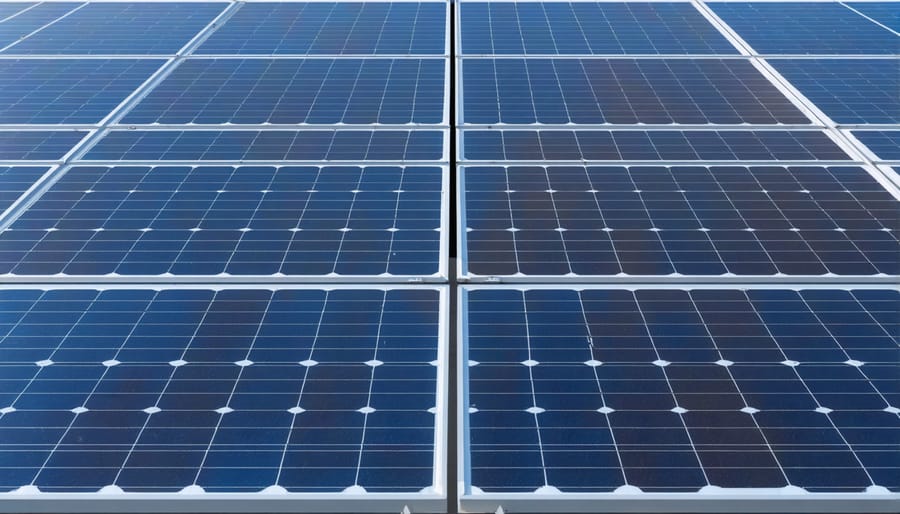
Understanding Your Panel’s Degradation Rate
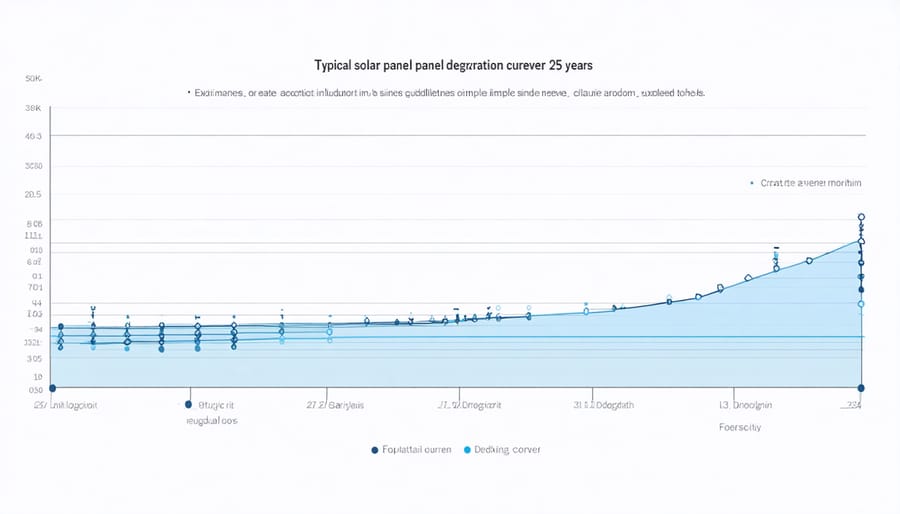
Industry Standards vs. Reality
Most solar panel manufacturers advertise a linear degradation rate of 0.5% to 0.7% per year, backing this up with 25-year performance warranties. While these industry standards sound promising, real-world data tells an even better story. Recent studies from the National Renewable Energy Laboratory (NREL) show that modern solar panels often outperform these warranty specifications, with actual degradation rates averaging just 0.4% to 0.5% annually.
This difference between solar panel warranty coverage and real performance means many homeowners are getting better long-term value than expected. For example, while a manufacturer might guarantee 80% production capacity after 25 years, many systems maintain 85% to 90% capacity over the same period.
Quality matters significantly in this equation. Premium panels from reputable manufacturers tend to show even lower degradation rates, sometimes as little as 0.3% per year. This means a high-quality solar system installed today could still be producing over 90% of its original output after two decades of service.
It’s worth noting that these improved performance metrics reflect advancements in solar technology and manufacturing processes over the past decade. Manufacturers often set conservative warranty terms to ensure they can stand behind their products, while actual performance frequently exceeds these guaranteed minimums.
Real Impact on Your Energy Production
Year-by-Year Performance Examples
Here’s a practical example of how a typical solar panel system’s output changes over 25 years. Starting with 100% power output in Year 1, you can expect approximately 99% output in Year 2, and 98% in Year 3. By Year 5, your panels will still produce about 96% of their original power.
The decline remains gradual through the middle years. At Year 10, expect about 93% output, while Year 15 typically shows 90% production capacity. Most homeowners are pleasantly surprised to learn that even at Year 20, their panels still generate roughly 87% of their initial power.
By the end of the 25-year warranty period, quality solar panels usually maintain about 85% of their original output. To put this in real terms, if your system initially produced 10,000 kWh annually, it would still generate approximately 8,500 kWh in Year 25 – enough to power most household needs effectively.
Remember, these numbers represent average performances, and many modern panels often exceed these expectations, especially with proper maintenance and favorable conditions.
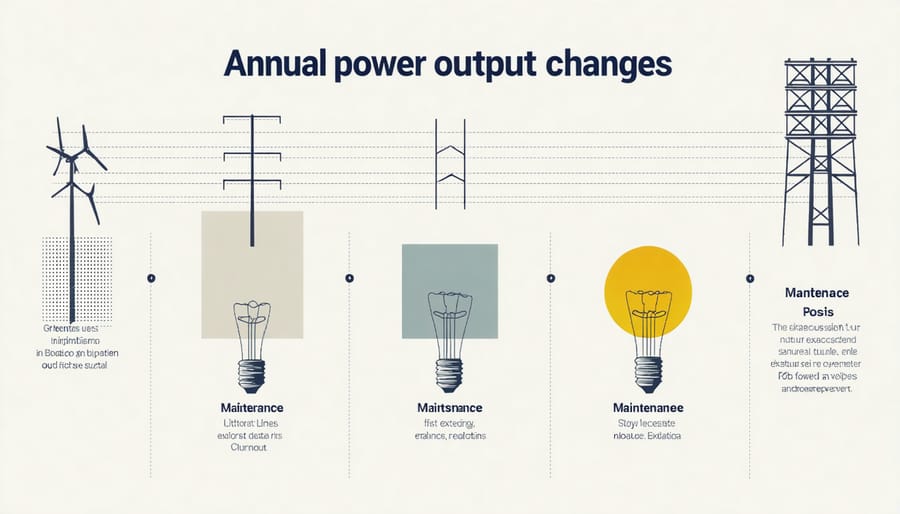
Maximizing Your Panel’s Lifespan
To maximize your solar panel’s lifespan and minimize degradation, regular maintenance and proper care are essential. Start by establishing a routine cleaning schedule to remove dust, leaves, and debris that can reduce efficiency. Aim to clean your panels at least twice a year, more frequently if you live in a dusty area or experience heavy bird activity.
Professional inspections play a crucial role in maintaining optimal panel performance. Schedule annual checkups to catch potential issues early and ensure all components are functioning correctly. During these inspections, technicians can identify and address micro-cracks, loose connections, or inverter problems before they impact performance.
Keep trees trimmed to prevent shade from affecting your panels, as partial shading can accelerate degradation. Monitor your system’s output through its monitoring app or interface to spot unusual performance drops quickly. Consider installing snow guards in snowy climates to prevent snow accumulation, and ensure proper ventilation beneath your panels to prevent heat buildup, which can accelerate degradation.
By following these simple maintenance steps, you can help your solar panels maintain their efficiency and potentially exceed their expected performance timeline.
While solar panels do experience natural degradation over time, their reliable performance and warranty-backed efficiency make them a smart long-term investment. With proper maintenance and an average decline of just 0.5-1% annually, quality solar panels continue delivering substantial energy savings for 25-30 years. The gradual, predictable nature of degradation means homeowners can confidently plan for decades of clean, renewable energy while significantly reducing their carbon footprint and energy costs.

